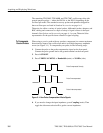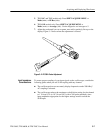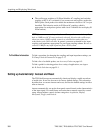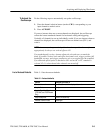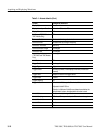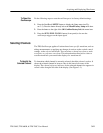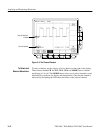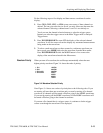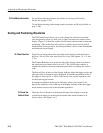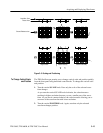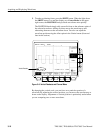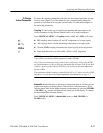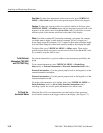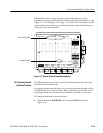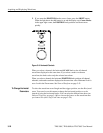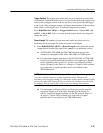
Acquiring and Displaying Waveforms
3–14
TDS 500C, TDS 600B, & TDS 700C User Manual
To read about selecting reference waveforms, see Saving and Recalling
Waveforms on page 3–154.
To read about selecting (and creating) math waveforms, see Waveform Math on
page 3–188.
Scaling and Positioning Waveforms
The TDS Oscilloscope allows you to scale (change the vertical or horizontal
size) and position (move up, down, left, or right) waveforms on screen for best
display. (Figure 3–5 shows the results of both vertical and horizontal scaling and
positioning.) This section first tells you how to quickly check and set vertical
and horizontal scales, positions, and other parameters, such as vertical bandwidth
and horizontal record length.
To quickly see the position of the waveform in the display, check the Channel
Reference, Record View, and Acquisition View icons. (See figures 3–5, 3–9, and
3–10.)
The Channel Reference icon, at the left side of the display, points to ground on
the waveform record when offset is set to 0 V. The oscilloscope contracts or
expands the selected waveform around this point when you change the vertical
scale.
The Record View, at the top of the display, indicates where the trigger occurs and
what part of the waveform record is displayed. In extended acquisition mode, if
the trigger is shown at 0% or 100% of the record view, see the acquisition view
for the actual trigger location.
In extended acquisition mode (option 2M only), when a live channel is dis-
played, the acquisition view at the top of the display indicates where the trigger
and waveform record occur in the extended acquisition.
Check the Vertical Readout at the bottom-left part of the display to read the
volts/division setting for each displayed channel (the selected channel is in
inverse video). (See Figure 3–6.)
To Find More Information
To Check Position
To Check the
Vertical Scale



